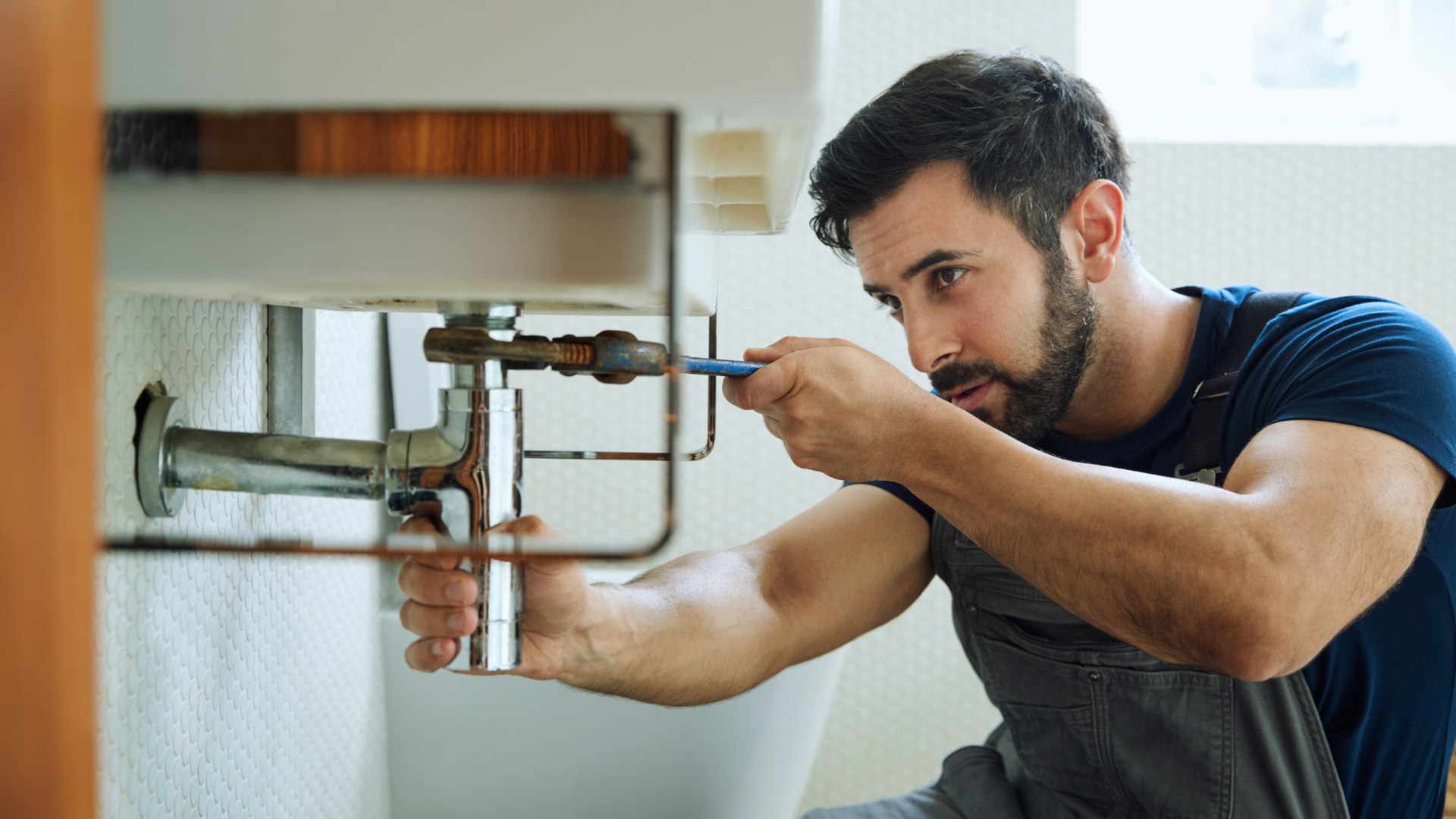A leaky faucet can be more than just an annoyance; it can lead to wasted water and increased utility bills. The good news is that fixing a leaky faucet is usually a straightforward process that anyone can tackle with a few simple tools. Understanding the common causes of faucet leaks is the first step in addressing the issue effectively.
Many leaks stem from worn-out washers, loose parts, or corroded components. By identifying the type of faucet and the specific source of the leak, one can choose the right repair method. Armed with the proper knowledge and a little patience, a homeowner can repair a faucet and restore it to optimal functionality.
However, it’s important to be aware that not every plumbing issue can be resolved through DIY methods. Some problems may be more complex, such as damaged pipes or advanced plumbing issues. In such cases, it’s best to contact professional plumbing firms like Milestone Home Services (https://callmilestone.com/) for expert assistance. Professionals bring specialized tools and experience to diagnose and resolve problems effectively, ensuring long-term solutions.
With this foundation in mind, let’s explore a few ways you can tackle a leaky faucet on your own.
Understanding Faucet Types
Faucets come in various types, each with unique mechanisms and advantages. Recognizing these differences is essential for effective repairs and maintenance.
Ball Faucet Overview
Ball faucets feature a single handle that controls both temperature and water flow. This type contains a rotating ball and is commonly found in kitchen sinks. The ball is typically made of polymer or metal and sits atop a spring-loaded valve.
When the handle is turned, the ball rotates to align with the supply ports, allowing water to flow. The design promotes easy operation, making it ideal for daily use. Ball faucets are known for their flexibility in adjusting water flow and temperature.
Regular maintenance involves cleaning the ball and replacing worn-out seals, which can help prevent leaks and extend the faucet’s life.
Compression Faucet Mechanics
Compression faucets operate using a simple mechanism that relies on a screw mechanism to control water flow. Typically, they feature separate hot and cold handles, each controlling its respective water line.
When the handle is turned down, a rubber washer compresses against the valve seat, stopping water flow. Wear and tear of the washers are common, leading to leaks.
Because of their straightforward design, they are easy to repair. Replacement washers or O-rings usually suffice to fix any leakage issues, making maintenance manageable for most homeowners.
Cartridge Faucet Function
Cartridge faucets maintain a reputation for reliability and ease of use. They can be recognized by a single or dual-handle design, often found in modern bathrooms and kitchens.
Inside, a cartridge regulates water flow and temperature. The cartridge moves up and down or rotates, controlling water delivery without the use of washers.
This eliminates common leak points, simplifying maintenance. Cartridge replacement may be necessary if issues arise, but this process is typically quick and does not require extensive tools.
Ceramic-Disk Faucet Structure
Ceramic-disk faucets are distinguished by their innovative design, featuring a ceramic plate to control water flow. They consist of two ceramic discs that move against each other to regulate water temperature and flow.
These faucets are highly durable and resistant to wear, making them less prone to leaks compared to other types. The high-quality ceramic ensures a tight seal when not in use.
Maintenance usually involves replacing O-rings or cleaning the ceramic plates, which can be done easily. This type is popular for its longevity and efficiency in both kitchens and bathrooms.
Initial Steps Before Faucet Repair
Before addressing a leaky faucet, certain preparatory actions are necessary. These steps ensure that the repair process can proceed smoothly and safely.
Turning off the Water Supply
The first crucial step is to shut off the water supply. This can typically be done by locating the main water valve, usually found near the water meter or where the water line enters the home. Turning this valve clockwise will cut off the water supply to the entire house.
For localized issues, there are often shutoff valves beneath the sink. These valves control water flow specifically to the faucet. Turning them clockwise is the method used to shut them off. It is essential to confirm that the water supply is indeed off by turning on the faucet. If no water flows, the supply is successfully shut down.
Identifying the Faucet Problem
Next, identifying the specific issue causing the leak is vital. Common causes of faucet leaks include worn-out washers, damaged O-rings, or loose components. Observing how the faucet leaks can provide clues; for example, a dripping faucet may suggest a worn washer, while a steady stream might indicate a more significant problem.
Careful examination of the faucet assembly is required. This includes checking for corrosion or buildup around components. Taking note of the faucet type-whether it is a compression, cartridge, ball, or ceramic disk faucet-can also aid in troubleshooting. Understanding these factors can clarify the needed repairs and parts for the restoration process.
Faucet Repair Procedures
Repairing a leaky faucet involves several key steps: disassembling the faucet, replacing any faulty parts, and reassembling it to ensure proper function. Each step is crucial for effective repair without further damage to the faucet or plumbing.
Disassembly of Faucet Components
To begin disassembly, the water supply must be turned off. For a standard faucet, she should first remove the handle by loosening the screw located underneath or at the back. A flathead screwdriver may be necessary to pry off any decorative cap.
Next, the retaining nut, which holds the cartridge or stem in place, must be removed with a wrench. For other types, such as a ball-type faucet, colors and shapes vary, so knowing the specific type is essential. After removing the retaining nut, extract the nozzle or cartridge gently.
It’s advisable to keep all parts organized to facilitate reassembly.
Replacing Faulty Parts
Identifying faulty components is vital after disassembly. Common issues stem from worn-out washers, O-rings, or cartridge seals. Inspect these parts carefully.
If a rubber washer or O-ring is damaged, it should be replaced with the correct size from a repair kit. The valve seat may also show wear; if so, replacing the seat washer is necessary.
For cartridge faucets, ensure that the replacement cartridge matches the old one. Minimize unnecessary trips to the store by bringing the old part for comparison.
Lastly, apply the plumber’s grease to O-rings and seals before installation for longevity.
Reassembly and Testing
Once all faulty parts are replaced, begin reassembly. Insert the new or repaired components in the reverse order of disassembly. Ensure that each part fits snugly to prevent future leaks.
After reassembly, she should turn on the water supply slowly to check for leaks. Run the faucet for a minute to clear any debris.
Examine the aerator at the tip of the faucet, as it may have accumulated mineral deposits. Cleaning or replacing the aerator can enhance water flow.
If leaks are present, it may be necessary to tighten or readjust components. This thorough reassembly and testing ensure a correctly functioning faucet.
When to Call a Professional Plumber
A leaky faucet can often be fixed with DIY methods, but there are situations where a professional Cambridge Plumber, or one similar, is necessary.
Signs to Call a Plumber:
- Persistent Leaks: If the problem continues after multiple attempts to repair it.
- Water Damage: If leaks are causing damage to walls or cabinets.
- Low Water Pressure: A sudden decrease in water pressure may indicate plumbing issues.
- Unfamiliar Components: If the faucet has complex parts or is outdated.
Complex Repairs:
Some repairs, like replacing a valve seat or dealing with a broken pipe, require expertise. If one encounters these issues, calling a plumber is advisable. You can read more about what they provide on websites such as PM247 if needed.
Time Constraints:
Individuals with busy schedules may not have time for DIY repairs. A professional can efficiently handle the task.
Safety Concerns:
Handling plumbing tools and fixtures can be hazardous. A professional plumber is trained to manage risks associated with plumbing repairs.
In situations beyond basic fixes, it is wise to contact a plumber. They can assess the problem and provide a reliable solution.




